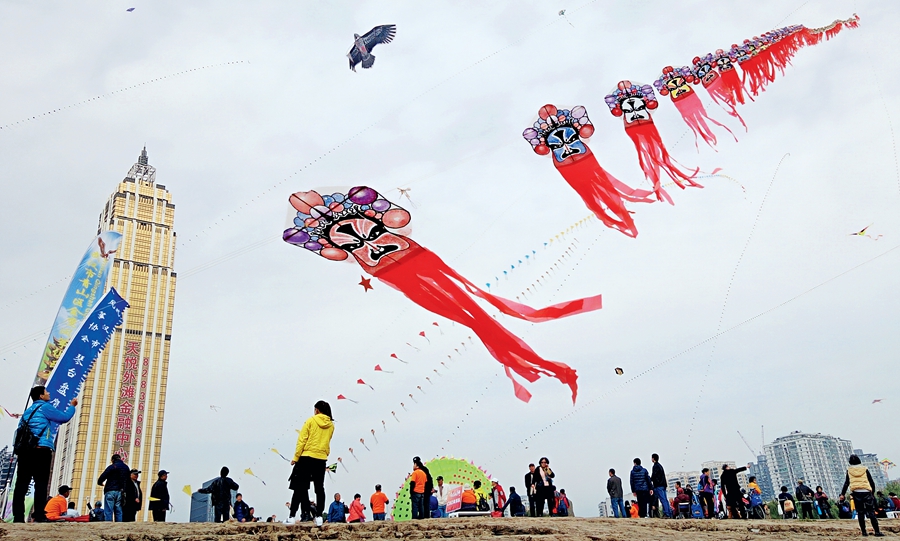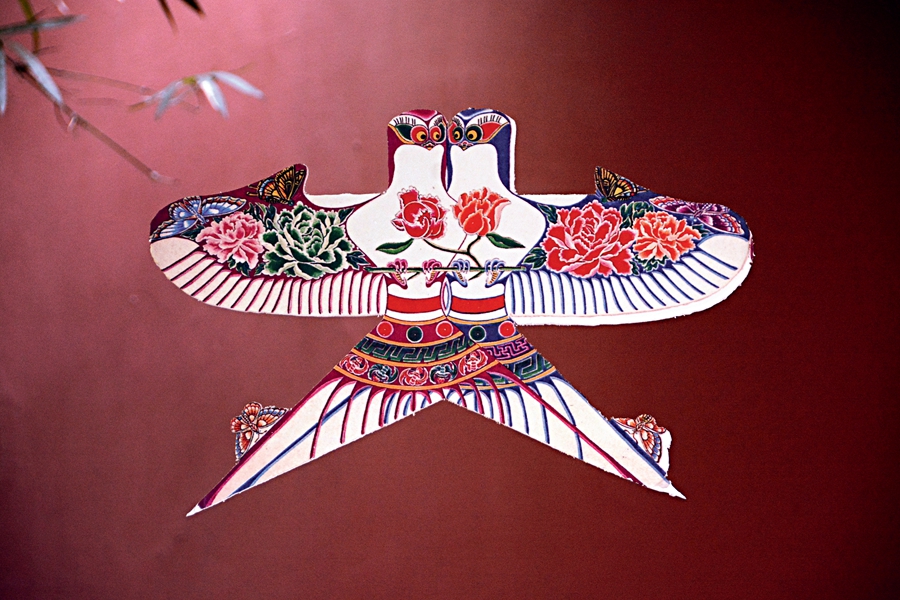The Earliest “Aircraft”
China Today,April 20, 2018 Adjust font size:
Weifang Kites
Kites first appeared in China, but they vary in different places. The representative ones are those made in Weifang City of Shandong Province, Beijing, and Nantong City of Jiangsu Province.
Weifang City, reputed as the “city of kites,” is a famous place for kite production and cultural exchange.
Flying kites in spring is a tradition in China.
Weifang kites can be traced back to the Warring States period (475-221 BC). Micius (original name Mo Di), a famous philosopher, militarist, and scientist, whose date of birth and death are unknown, spent three years to make the first eagle-shaped wooden aircraft. It also marked the origin of the kite. By the 18th century, professional kite makers emerged in Weifang. They converged along the banks of the Bailang River and the kites they made were fashionable and easy-to-fly, gaining a reputation far and wide. Whenever the market was held along the river, the kite makers saw the most thriving business. Among them there are 10 masters that were especially famous, and one of them made a kite with the design of a boy with wings of red-crowned crane as a tribute to celebrate the birthday of Emperor Qianlong (1711-1799). This design has become the representative pattern of Weifang kites till today.
The beach along the Bailang River is the best spot to fly kites. Various kite flying competitions are held there every year, making Weifang a thriving kite market, attracting kite vendors, handicraftsmen, and kite fliers from across the country. Some local famous painters have participated in kite design, making some extremely fine kites which are sold at high prices. However, people still need to make reservation in advance to buy such kites due to the high demand. The emergence of those fine kites has further promoted the development of the kite culture in Weifang.
By the turn of the Qing Dynasty (1644-1911) and the Republic of China (1912-1949), some kite makers from Weifang who used to serve the royal court lost their jobs and became folk craftsmen, which further improved the overall kite-making techniques of the place, so the Weifang kites also acquired a touch of imperial style. They look elegant and delicate, using materials such as fine silk fabric and feature realistic paintings, rendering them not only recreational, but also an art.
In 2006, Weifang kites were included into the list of the first batch of national intangible cultural heritages.


